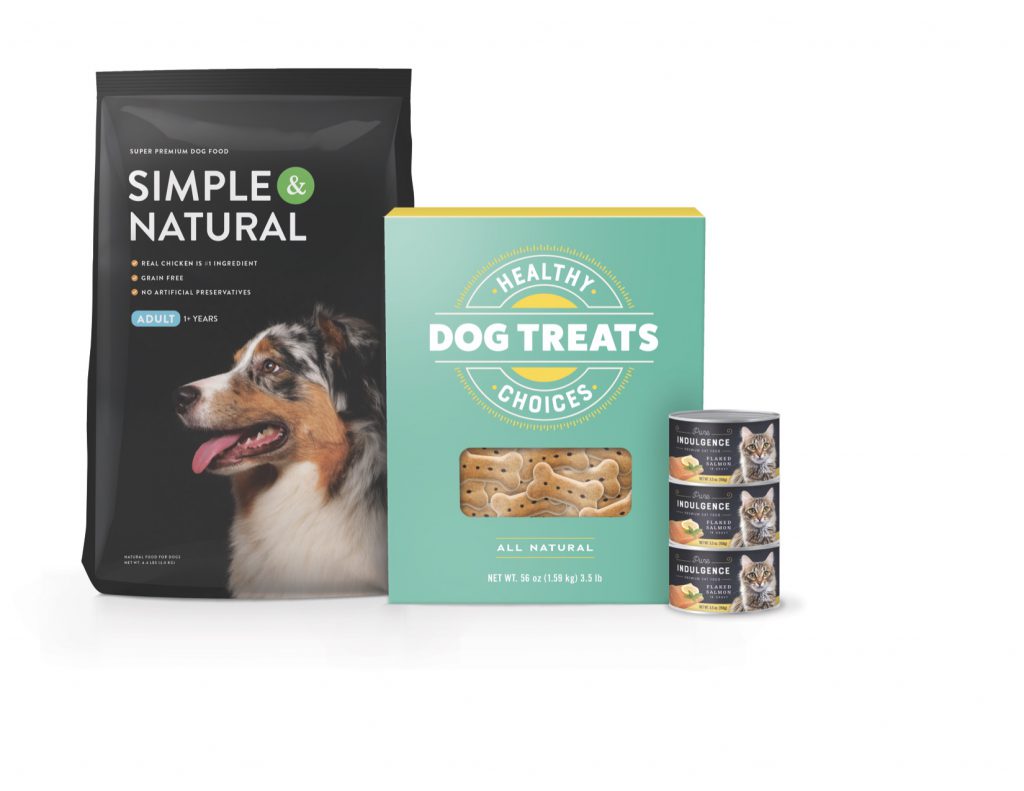From closures to materials, learn about key decisions you’ll need to make in the packaging process.
When you think about your pet food product packaging, your first thought might be the breed you’ll feature on the package graphic, or which icons can best showcase the nutrition that lies inside. But it’s important to remember that before you can paint a picture of your product, you need to select the right canvas.
From zip closures to flat-bottom bags, your consumers come to the pet food aisle with certain expectations for packaging quality, whether they realize it or not. Read on to learn about the important elements driving whether pet parents pick up your bag or the one sitting next to it.
Choosing Your Bag Style
If we could turn the clock back half a century, we’d see stores chockful of paper bags. Since that time, design options have expanded significantly, offering pet food brands new ways to help their bag stand out from the pack. Below is a pick list of today’s most popular bag styles, according to one of our package partners, Glenn Treliving, Director, Product and Business Development at Layfield Group Limited.
- Stand Up Pouches (SUP): For package weights 1 to 8 lbs., stand-up pouches are the most economical option on the packaging menu. However, given the amount of mandatory regulatory and government information now required and the market trend toward higher-end products, two-panel SUPs have largely lost their popularity in the pet food aisle with the exception of treats.
- Quad Seal Bags: If you’re looking for options for economical larger-volume bags, the quad seal bag is a good starting point. This can be an advantageous choice for brands looking to increase their canvas to 4 panels while remaining cost-effective. If you are looking for a resealable closure, the option is available, albeit compromised in this style. The quad seal bag merchandises well, typically found lying down on the lower shelves.
- Flat Bottom Bags: Flat-bottom bags are relatively new to the market, and despite their slightly higher price tag, have taken off in popularity in recent years. This style suits products from 2 lbs. up to 25 lbs. For smaller volumes, the package stands well with excellent shelf utilization. Lying down with its flat bottom facing out for 10- to 18-lb. bags, it provides the perfect face to market your brand, with plenty of panels leftover for feeding and nutritional information.
- Pinch-Bottom Bags: Pinch-bottom bags, with or without fold-over bottoms, are ideal for larger-volume packages. Because large bags are often housed on the bottom shelf, be sure to optimize the bottom 3 to 4 inches of the face, which is a focus for consumers from this vantage point.
Selecting the Best Materials
In addition to determining the style of bag that best suits your product, you’ll need to select material that is both practical and appealing to your customers.
Many of today’s pet food bags are multi-layered, with polyester (PET) / polyethylene (PE) or polyester (PET) / metalized-polyester (MET PET)/ polyethylene (PE) being the most common. Pet food brands are also choosing to incorporate matte or soft-touch matte surfaces to their packaging to help set their bag apart visually and tactilely. Plastic still maintains a prevalent position and offers a level of freshness that can be challenging to emulate with other materials; however, new materials, including many sustainable options, are being developed. (More to come in a future blog.) If you are interested in working with nontraditional materials for your packaging, it is important that you work closely with your manufacturing partner to conduct trials that will ensure quality and freshness of your product through its best-by date.
Another way to improve freshness – and provide peace of mind to pet owners – is through closures. Common options include easy-to-use sliders, Velcro® closures (or other hook-to-hook closures) that have an audible and tactile feel, and simple press-to-close (PTC) zippers that are a familiar feature in human food products.
Conclusion
So, what do all of these packaging decisions amount to in the success of your product? A lot. Unlike your ultimate customer – a hungry dog or cat – pet owners do not build a firsthand experience with the product inside. They can’t taste the lamb you imported from Australia and that perfect blend of crunch and chew in each piece of kibble. Therefore, you must create packaging with value: packaging that says, “You don’t need to pour my contents into an empty bin for storage.” You want a bag that screams function and promises freshness, so pet owners are reminded of your brand and its value at each and every meal.
